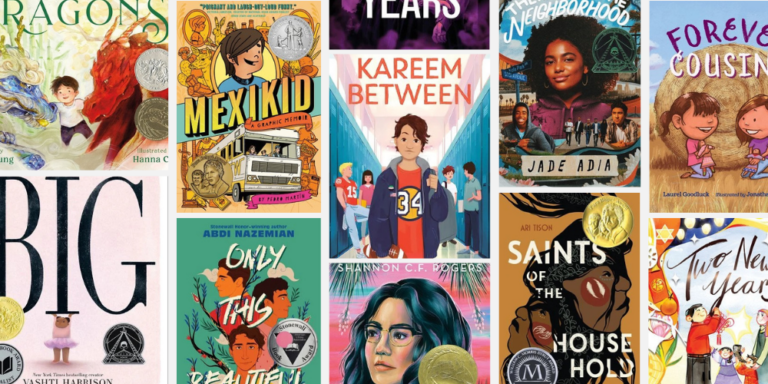Remember the days when your biggest cheating concerns were students sneaking a peek at their neighbor’s test or copying from Wikipedia? Now, with the rise of powerful AI tools like ChatGPT, the game has changed. AI can write essays, solve problems, and even generate creative content– often without leaving a trace. While AI technologies bring many benefits, they present academic integrity challenges, and research has shown that plagiarism detectors are unreliable. It can feel overwhelming!
But don’t worry, you can ensure your students are truly learning, even in this new era of AI. Below, we will guide you through five easy steps to design “AI-resistant” assignments and assessments that are more difficult for a chatbot to complete. These ideas also provide authentic and engaging learning experiences for students–a win-win!
Step 1: Embrace Personalization and Student Voice
One of the best defenses against AI is to tap into something AI struggles to replicate: unique, human perspectives. AI can spit out generic responses, but it can’t replicate your students’ individual experiences, thoughts, and feelings.
Here’s how to make it personal:
- Connect to Real Life: Ask students to relate the topic to their own lives or current events. For example, if you’re teaching about the Civil Rights Movement, ask students to reflect on how those events connect to their own communities or experiences. Or, students could write a persuasive essay about a local issue they care about.
- Encourage Reflection: Have students write about their opinions, beliefs, or values related to the topic. What are their takeaways? What resonates with them?
- Incorporate Choice: Provide students with options for how they want to demonstrate their learning. Allow them to choose formats like essays, poems, videos, or podcasts that best suit their strengths and interests.
Step 2: Unleash Creativity
AI can generate text and images, but it often lacks the spark of original thought that comes naturally to humans. Encourage students to think outside the box and design assignments that tap into their creative potential.
Try these strategies:
- Artistic Representations: Ask students to express their learning through visual arts, music, drama, or other creative mediums. For example, instead of a traditional report on a historical figure, have them create a comic strip, write a song, or perform a monologue from that person’s perspective.
- Storytelling: Stories are powerful tools for engaging students and fostering creativity. Have them write short stories, poems, or even screenplays related to the learning objectives.
- Open-Ended Projects: Provide students with a broad theme or challenge and give them the freedom to explore it in their own unique ways. This could involve designing experiments, creating inventions, or developing solutions to real-world problems. Students could create a podcast, design an infographic, or build a prototype to share their learning.
Step 3: Go Live! Emphasize Collaboration and Oral Communication
AI might excel at generating text, but it can’t replicate the dynamic energy of a classroom discussion or teamwork in a group project. Bring learning to life by emphasizing collaboration and communication, building essential skills for success in students’ future careers.
Bring back those human elements with these strategies:
- Class Discussions: Encourage lively debates and discussions where students can share their ideas, challenge perspectives, and build on each other’s thoughts. Structure these discussions to require students to support their arguments with evidence and elaborate on their thinking. These discussion strategies may help!
- Group Projects: Collaborative projects build teamwork, communication, and problem-solving. Try incorporating peer reviews or presentations to further develop these skills.
- Oral Presentations: Require students to present their learning in front of an audience. This encourages them to synthesize information, organize their thoughts, and develop their public speaking skills. This video about a low-stress process for introducing public speaking provides helpful tips.
Step 4: Design Assessments as Learning Experiences
Think back to your own school days. Did you ever cram for a test the night before, only to forget everything shortly after? Traditional assessments, especially those that rely on rote memorization or formulaic responses, are not only susceptible to AI assistance but also often fail to promote deep, meaningful learning. Instead of designing assessments solely as a means of evaluation, reimagine them as valuable learning opportunities that encourage critical thinking, problem-solving, and the application of knowledge.
Consider these approaches:
- Project-Based Learning: Engage students in real-world challenges that require them to apply their knowledge and skills to create tangible products or solutions.
- Performance Assessments: Allow students to demonstrate their understanding through presentations, performances, debates, or simulations.
- Portfolios: Encourage students to curate collections of their work over time, showcasing their growth and reflection.
Step 5: Shift Your Mindset From Policing to Empowering
Instead of viewing AI solely as a threat to academic integrity, embrace it as a tool that can revolutionize teaching and learning. Just as calculators transformed math education, AI has the potential to enhance how we approach knowledge and skill development. The goal isn’t to eliminate AI but to responsibly and ethically harness its potential.
Here’s how to shift your mindset:
- Establish Clear Guidelines: Be transparent with students about your expectations for AI use. Develop clear guidelines outlining acceptable and unacceptable uses, and emphasize the importance of academic integrity. Consider creating an AI use scale, and communicate where each assignment should fall. For example, the stoplight model labels: AI-free (red), AI-assisted (yellow), and AI-empowered (green).
- Foster AI Literacy: Equip students with the knowledge and skills to use AI tools effectively and ethically. Teach them about AI’s capabilities and limitations, as well as the ethical considerations surrounding its use. Providing hands-on AI experiences for students to interact with AI, such as those provided in ISTE’s Hands-On AI Projects for the Classroom guides, are a great starting point.
- Embrace AI as a Partner: Explore how AI tools can support student learning, such as providing personalized feedback, offering tutoring support, or facilitating research. Student-facing chatbots such as SchoolAI provide a safe and monitored environment for students to interact with AI tools.
Ready to dive deeper into strategies for navigating AI in the classroom? Consider enrolling in course 5345: Rethinking Assignments and Assessments in the Age of Artificial Intelligence. In addition to learning more about how to create AI-resistant assignments, you’ll gain ideas for safely and effectively integrating AI use for students. This course will provide you with even more tools and techniques to design (or re-design) meaningful assignments and assessments that outsmart the bots!
The rise of AI in education presents both challenges and opportunities. By focusing on authentic learning experiences, personalized assessments, and the development of essential future-ready skills, we can prepare our students to thrive in an increasingly AI-driven world!
About the Author

Sarah Murphy is the Evaluation Manager and a Professional Learning Specialist at Teaching Channel. She holds a B.A. in History and a Master’s in Education. Sarah began teaching in 2004 at the elementary level. She now leads Teaching Channel’s Evaluation Team, managing our wonderful team of Course Evaluators. Sarah is also a coursewriter and content creator, specializing in edtech, educator wellness, and content area teaching.
Fun fact: Sarah has camped in 18 national parks and hopes to visit all 63 someday!







